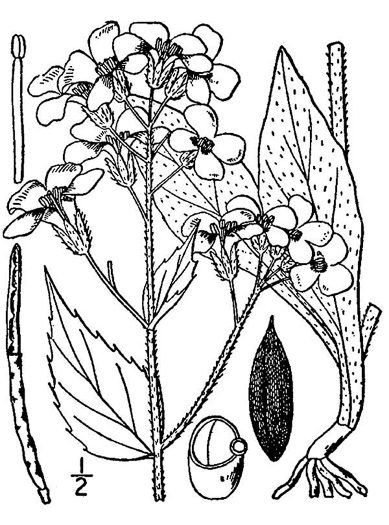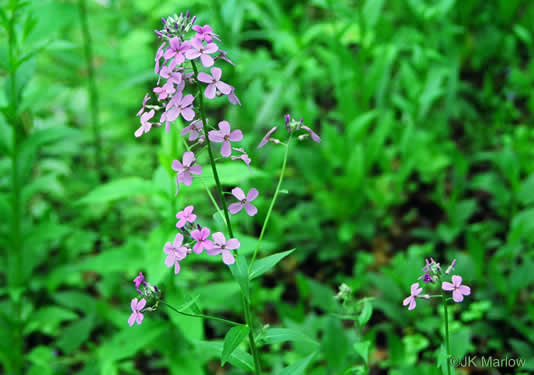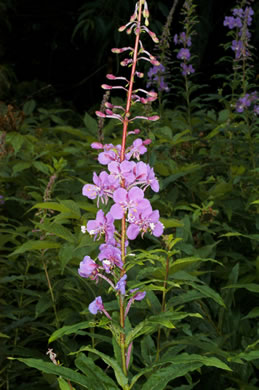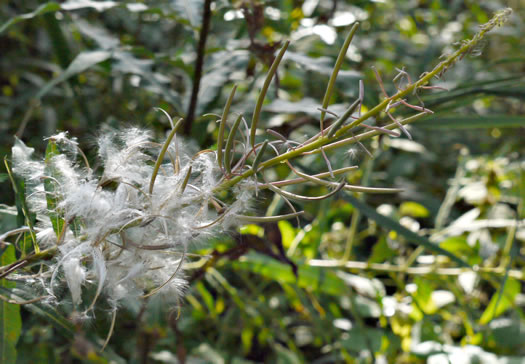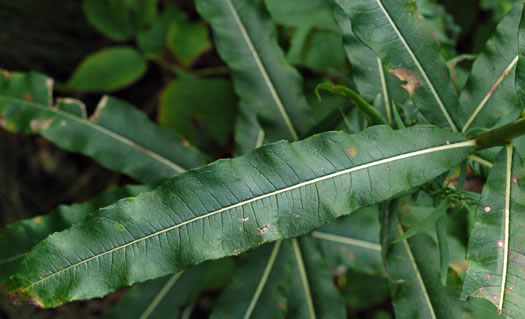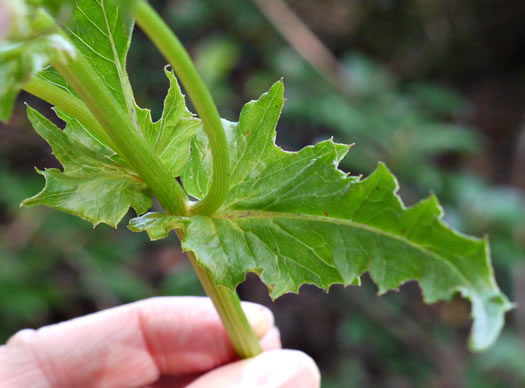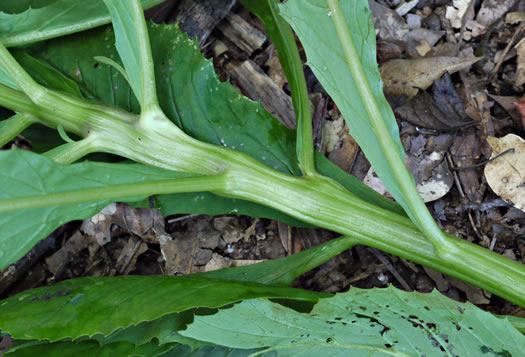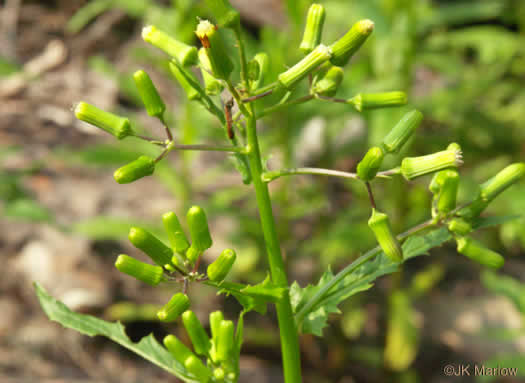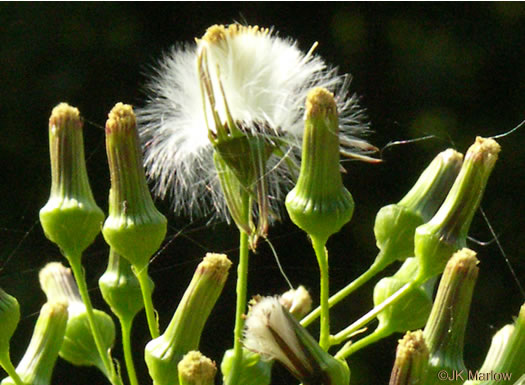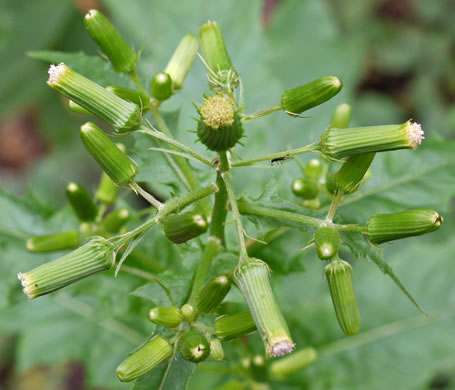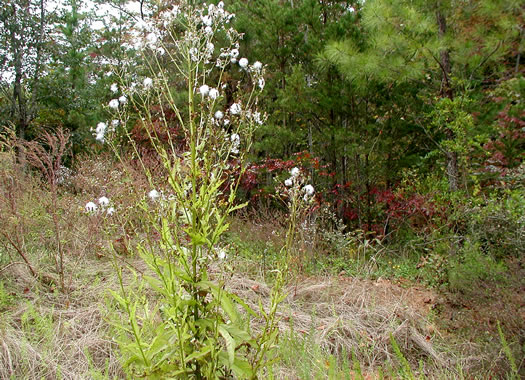Your search found 17 image(s) of Dame's Rocket and Fireweed.
To see larger pictures, click or hover over the thumbnails.
To go to the plant's detail page, click its name.
 Habitat: Bottomlands, roadsides, moist forests
Habitat: Bottomlands, roadsides, moist forests
The fragrant flowers are borne in showy terminal racemes on stem & branches, per Wildflowers of Tennessee (Carman, 2005).
Cultivated and escaped, now invading natural areas in northern states, per Wildflowers of Tennessee, the Ohio Valley, and the Southern Appalachians (Horn, Cathcart, Hemmerly, & Duhl, 2005).
 Habitat: Grassy balds, roadsides, montane fields, burned areas, disturbed areas
Habitat: Grassy balds, roadsides, montane fields, burned areas, disturbed areas
Narrow purplish capsules angle upward, per Wildflowers of Tennessee, the Ohio Valley, and the Southern Appalachians (Horn, Cathcart, Hemmerly, & Duhl, 2005).
Flowers numerous, with 4 roundish short-clawed petals and a 4-lobed stigma, per Wildflowers of Tennessee, the Ohio Valley, and the Southern Appalachians (Horn, Cathcart, Hemmerly, & Duhl, 2005).
Sepals purplish, linear-oblanceolate, pubescent, 10-15mm long, 1-2mm wide, per Vascular Flora of the Carolinas (Radford, Ahles, & Bell, 1968).
An erect plant 6' or taller, often abundant in recently burned-over areas, per Wildflowers of the Southern Mountains (Smith, 1998).
Down-tufted seed are wind dispersed, per Wildflowers of Tennessee, the Ohio Valley, and the Southern Appalachians (Horn, Cathcart, Hemmerly, & Duhl, 2005).
Numerous crowded lance-shaped, entire, sessile leaves to 6" long & 1.2" wide, per Wildflowers of Tennessee (Carman, 2005).
 Habitat: In disturbed soil in nearly all habitats except the extremely xeric, present in most parts of the modern (beat-up) landscape at least as seedlings, liable to turn up at the smallest disturbance (such as small tree-fall tip-up mounds or campfires, even in large natural areas), most abundant in areas extensively disturbed or scarified by timber-harvest, bulldozing, or severe fire
Habitat: In disturbed soil in nearly all habitats except the extremely xeric, present in most parts of the modern (beat-up) landscape at least as seedlings, liable to turn up at the smallest disturbance (such as small tree-fall tip-up mounds or campfires, even in large natural areas), most abundant in areas extensively disturbed or scarified by timber-harvest, bulldozing, or severe fire
Lvs alternately spiraling, sharply serrate to irregularly lobed (variable), per Forest Plants of the Southeast and Their Wildlife Uses (Miller & Miller, 2005).
Leaf base cuneate to attenuate or upper stem leaves auriculate, per Vascular Flora of the Carolinas (Radford, Ahles, & Bell, 1968).
Stem slightly hairy or not, fleshy, grooved, solid with white pith, per Forest Plants of the Southeast and Their Wildlife Uses (Miller & Miller, 2005).
Heads cylindrical but swollen at the base, bracts equal & in a single series, per Wildflowers of the Southern Mountains (Smith, 1998).
Nutlets tapered, brown, ribbed, topped by soft and bright-white bristles, per Forest Plants of the Southeast and Their Wildlife Uses (Miller & Miller, 2005).
The whitish corollas are barely visible above the involucres, per Wildflowers of the Southern Mountains (Smith, 1998).
Leaves irregularly serrate to dentate, unlobed or lobed, per Vascular Flora of the Carolinas (Radford, Ahles, & Bell, 1968).
Appearing seemingly from nowhere, at small soil disturbances in forests, per Weakley's Flora.

